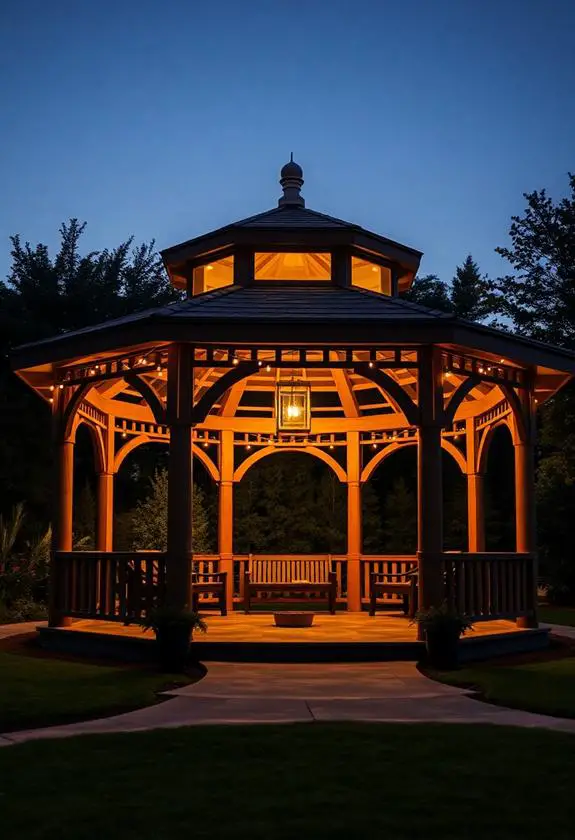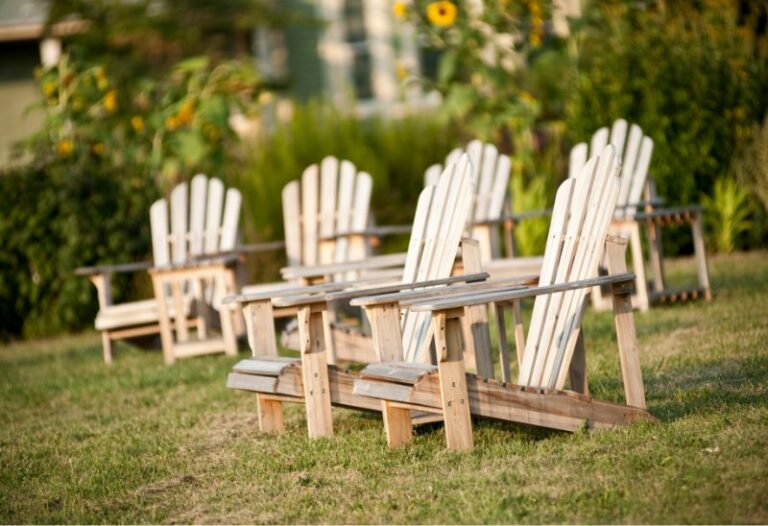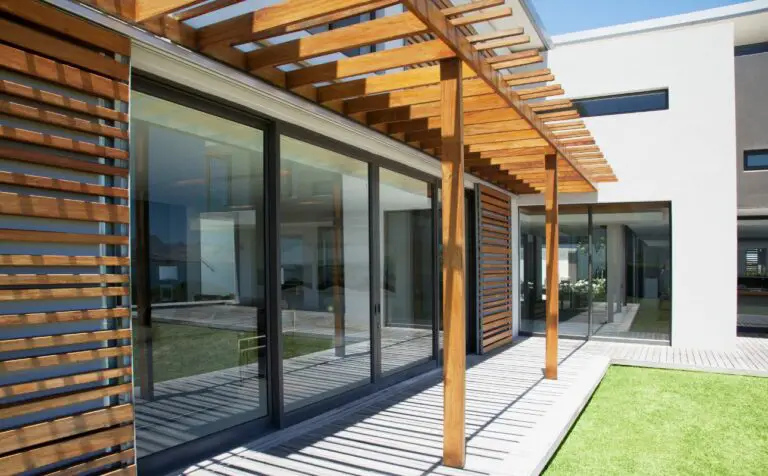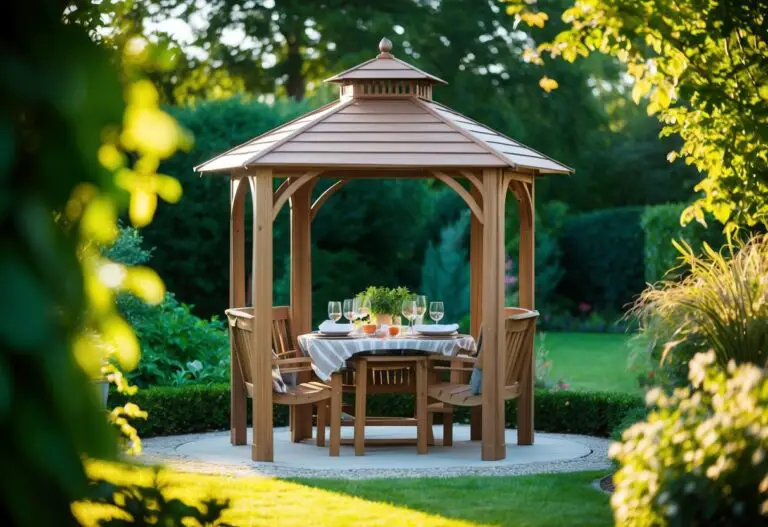Pergolas are an excellent addition to any outdoor space, providing both aesthetic appeal and functional benefits. Pergolas create a shaded area that offers protection from the sun’s harmful rays while still allowing for ventilation and natural light.
When installing a pergola, one of the most important questions is how high it should be. The height of a pergola depends on various factors such as its intended use, location, size, and design. The ideal height for a pergola can vary depending on personal preference and specific requirements.
This article examines the different aspects to consider when determining the appropriate height for your pergola. By understanding these factors, you will be able to make an informed decision about what works best for your situation.
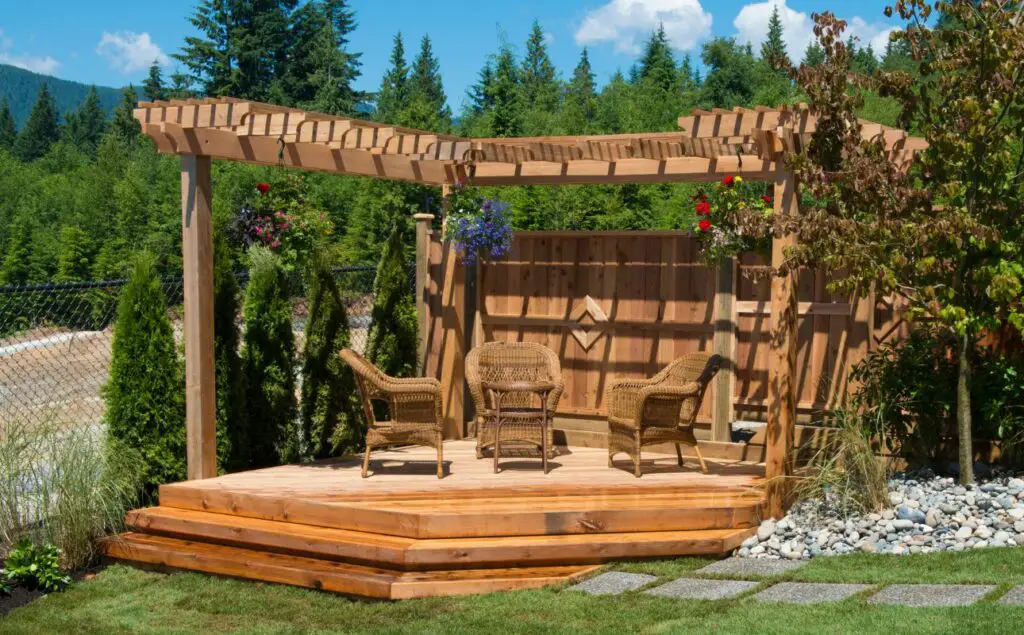
Purpose Of Your Pergola
Pergola height is an essential consideration when building a structure that will serve as the centrepiece of your outdoor living space.
Functionality analysis is one way to determine how high your pergola should be. This process involves evaluating what activities you plan on doing under the pergola, such as dining or entertaining guests.
It’s crucial to consider factors like sunlight and weather conditions in your area when deciding on the ideal height for your pergola. By taking these factors into account during planning, you can ensure that your pergola will provide adequate shade and protection from the elements while also fitting seamlessly into your overall landscape design scheme.
Considering Your Location And Climate
Understanding the purpose of your pergola is important in determining its ideal height. The standard height for a pergola is 8 feet, but this can vary based on regional factors and personal preferences.
In areas with heavy snow loads or strong winds, it may be necessary to increase the height to ensure stability and prevent damage.
Consider the intended use of the space underneath the pergola. If you plan on using furniture or tall plants, a higher ceiling will provide more room and comfort.
On the other hand, if you want a cozy intimate setting, a lower ceiling might be preferred. Finding the ideal height for your pergola depends on balancing practicality and aesthetics while considering any regional factors that may impact its construction.
Determining The Size And Design Of Your Pergola
When determining the size and design of a pergola, it is important to consider the size of the area it will occupy and the size of the pergola itself. One must consider the aesthetic design that best suits the needs of the space.
It is also important to take into account the height of the pergola, as this will affect the amount of shade it can provide. Materials and overall construction should be taken into consideration to ensure the pergola is safe and secure.
Size Considerations
Designing aesthetically and accommodating functionality are two crucial factors to consider when determining the size of your pergola. One important aspect to take into account is the height of the structure.
The height should be relative to its intended use, ensuring that it provides enough headroom for comfortable movement underneath while not being too high that it becomes impractical or unattractive.
A standard height for a freestanding pergola is between 8 and 10 feet tall, which allows ample space for seating arrangements without compromising on visual appeal.
If you plan on attaching your pergola to an existing structure such as a house or garage, it’s essential to ensure that the height matches seamlessly with the building’s architecture, creating a cohesive design aesthetic.
Carefully considering the desired function and overall look of your outdoor living area will help determine how high your pergola should be constructed.
Design Considerations
Another important factor to take into account when determining the size and design of your pergola is the material options and decor choices available.
The type of materials used can significantly impact the overall look, durability, and maintenance requirements of the structure. For instance, wood may provide a natural rustic appeal but requires regular upkeep to prevent rotting or warping. Aluminum or vinyl offers low-maintenance alternatives that are resistant to harsh weather conditions.
Incorporating decor elements such as lighting fixtures, plants, or furniture pieces can enhance the function and aesthetic appeal of your outdoor living space.
Accounting For Clearance And Safety
When constructing a pergola, it is important to consider clearance and safety. The minimum height of a pergola should be 7 feet from the ground to allow for comfortable movement underneath.
Measuring distance is also crucial in ensuring there is adequate space between the structure and any nearby structures or trees. Structural stability must be prioritized to ensure the safety of those using the area beneath the pergola. Building codes may dictate specific requirements for pergolas depending on location and intended use.
It is essential to consult local building codes before beginning construction to avoid potential legal issues down the line. By taking these factors into consideration, builders can create a safe and functional outdoor living space with a well-designed pergola that meets both aesthetic and practical needs.
Making The Best Decision For Your Needs And Preferences
When it comes to installing a pergola, determining the height of the structure is an important decision that should not be overlooked. The installation process can vary depending on the material options chosen for construction.
If constructing a wooden pergola, it may require more effort and time as compared to metal ones due to its weight and durability. Additionally, choosing the right height for your pergola can make all the difference in how comfortable you are when using it.
While there is no fixed rule regarding pergola heights, most people choose one that allows them to sit or stand comfortably underneath without feeling cramped or claustrophobic. Selecting a height depends on individual preferences and needs such as whether it will be used for entertaining guests or simply relaxing alone.
The Bottom Line
When considering building a pergola, several questions arise, including the best materials to use and whether a permit is necessary. Homeowners may wonder how much it will cost to construct a pergola and if they should hire a professional or attempt a DIY project.
Before constructing a pergola, it is essential to determine the appropriate height based on its intended use. While there are various factors to consider when building a pergola, such as material selection and permit requirements, with careful planning and attention to detail, this outdoor structure can be an excellent addition to any home.
Whether you choose to tackle the task yourself or enlist the help of professionals, creating a shaded oasis in your backyard can provide years of enjoyment for you and your family.
FAQ
What Materials Are Best For Building A Pergola?
The best materials for building a pergola include pressure-treated wood, cedar, redwood, vinyl, and aluminum. Pressure-treated wood and cedar are popular due to their durability and natural resistance to rot and insects. Redwood offers beauty and longevity. Vinyl and aluminum provide low-maintenance, weather-resistant options for modern aesthetics.
Do I Need A Permit To Build A Pergola?
Whether you need a permit to build a pergola depends on your local building codes and regulations. It’s essential to check with your local municipality or planning department to determine specific requirements. Permits may be needed based on size, location, or attachment to existing structures. Always follow local guidelines to ensure compliance.
Can A Pergola Be Attached To My House?
Yes, a pergola can be attached to your house. Known as an attached pergola, it provides shade and architectural interest to your home. Properly attaching a pergola requires anchoring it to the house’s wall or ledger board, ensuring structural integrity and stability. Consult a professional to ensure a safe, secure installation.
How Much Does It Cost To Build A Pergola?
The cost to build a pergola varies depending on materials, size, and complexity of the design. On average, a DIY pergola may cost between $500 and $4,000. Hiring a professional can raise the cost to $3,500-$10,000 or more. Material choice, labour, and customization significantly impact the final price of your pergola project.
Do I Need To Hire A Professional To Build A Pergola Or Can I Diy It?
You can DIY a pergola if you have basic carpentry skills and access to the necessary tools. Hiring a professional is recommended for complex designs, attaching them to your house, or when dealing with local permits. A professional ensures proper construction, safety, and compliance with building codes and regulations.
